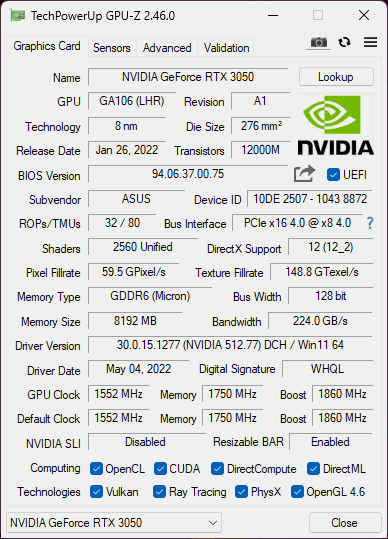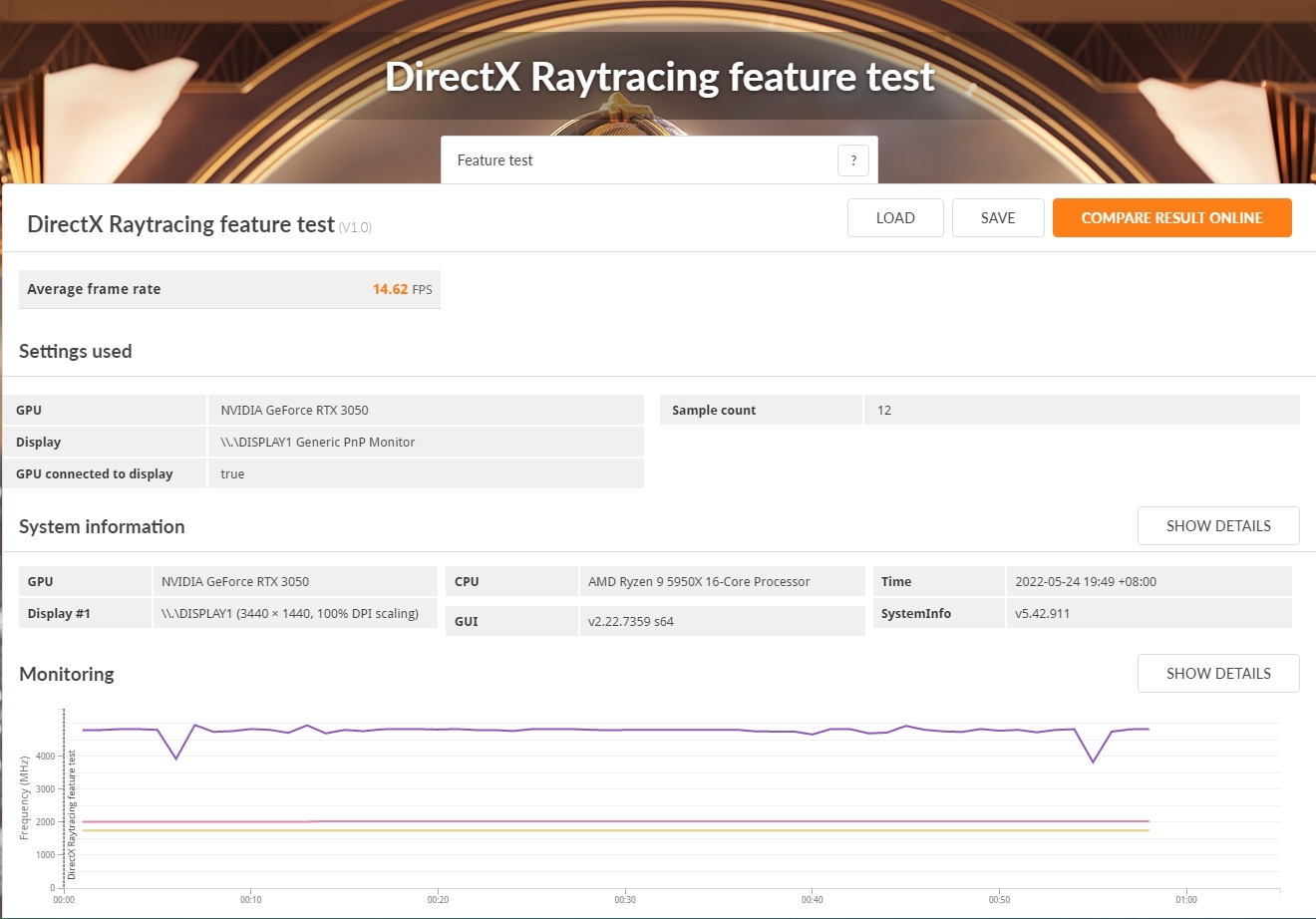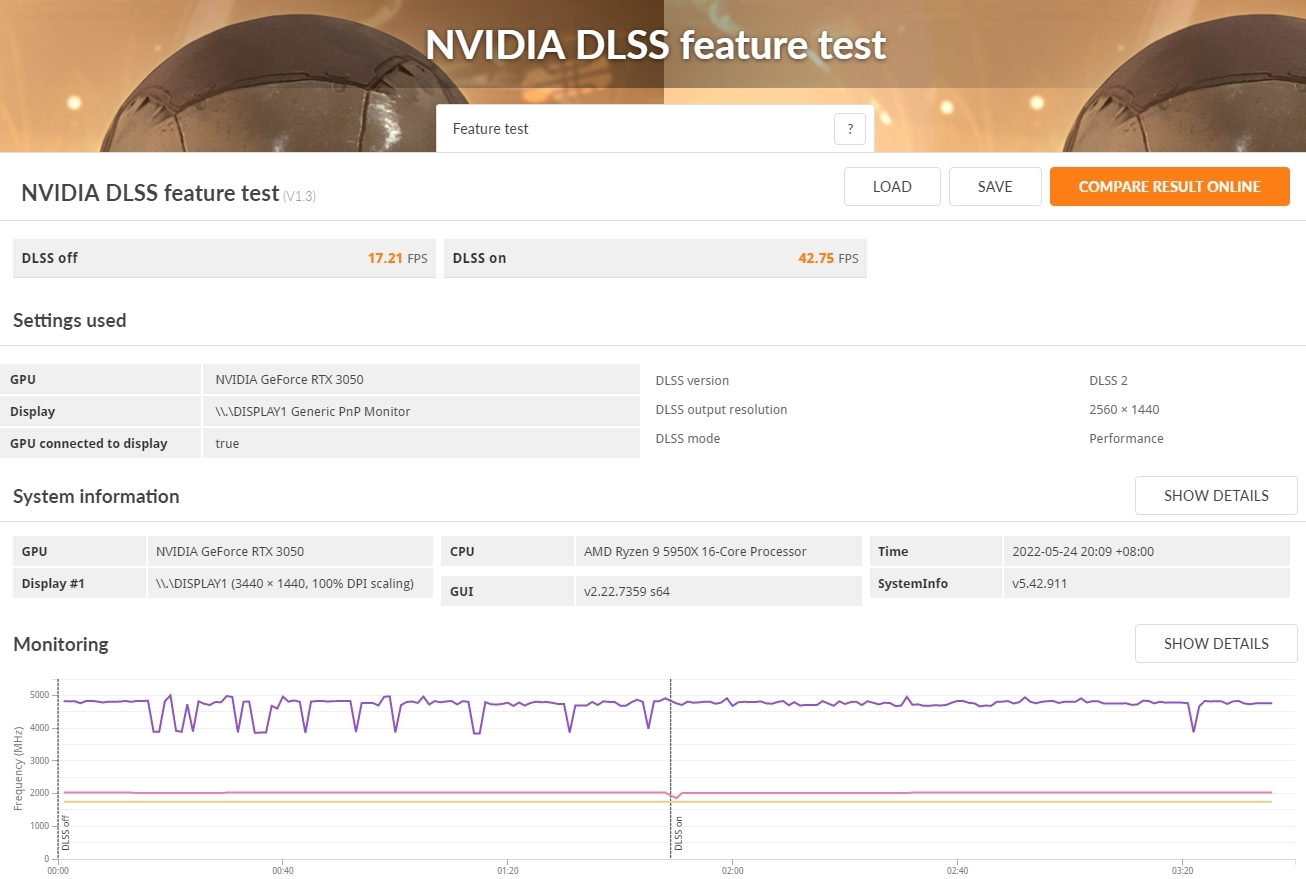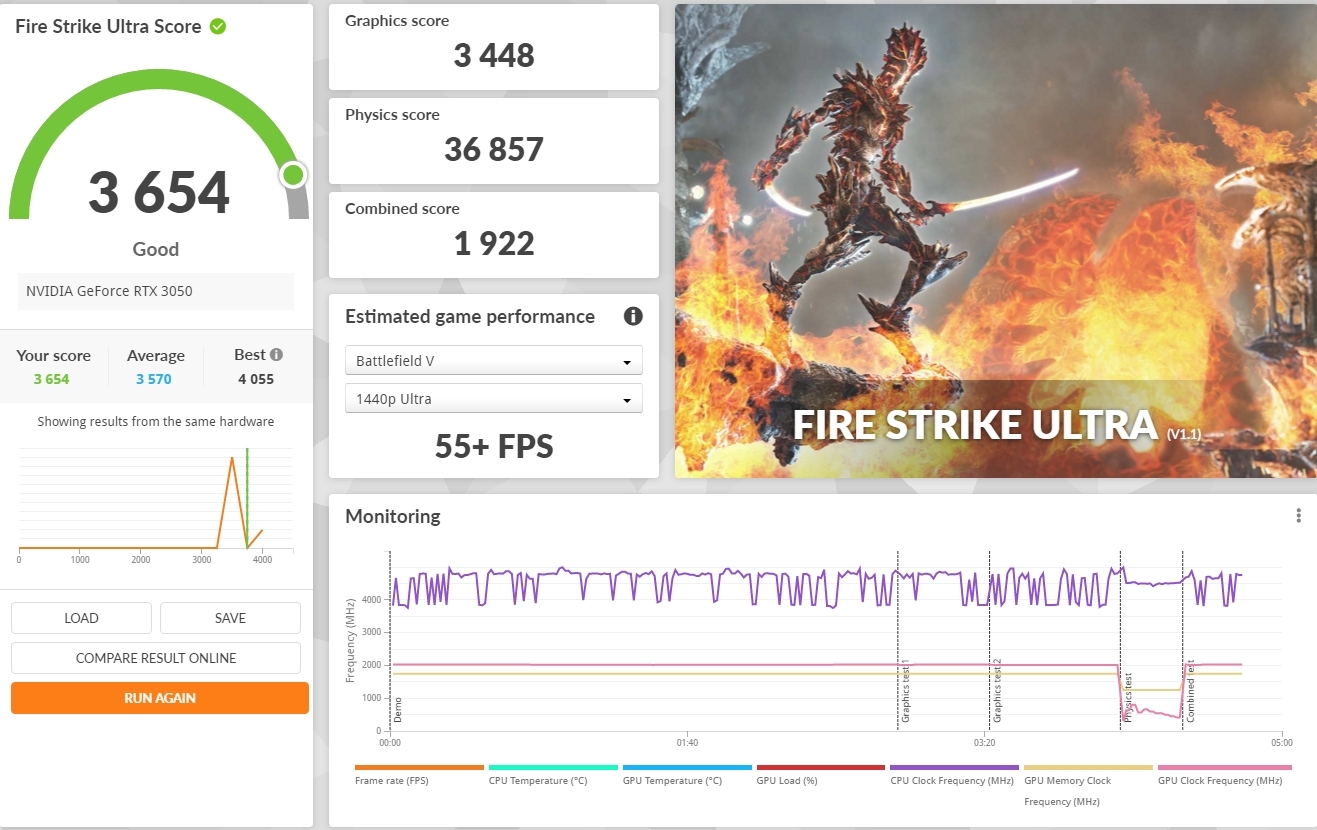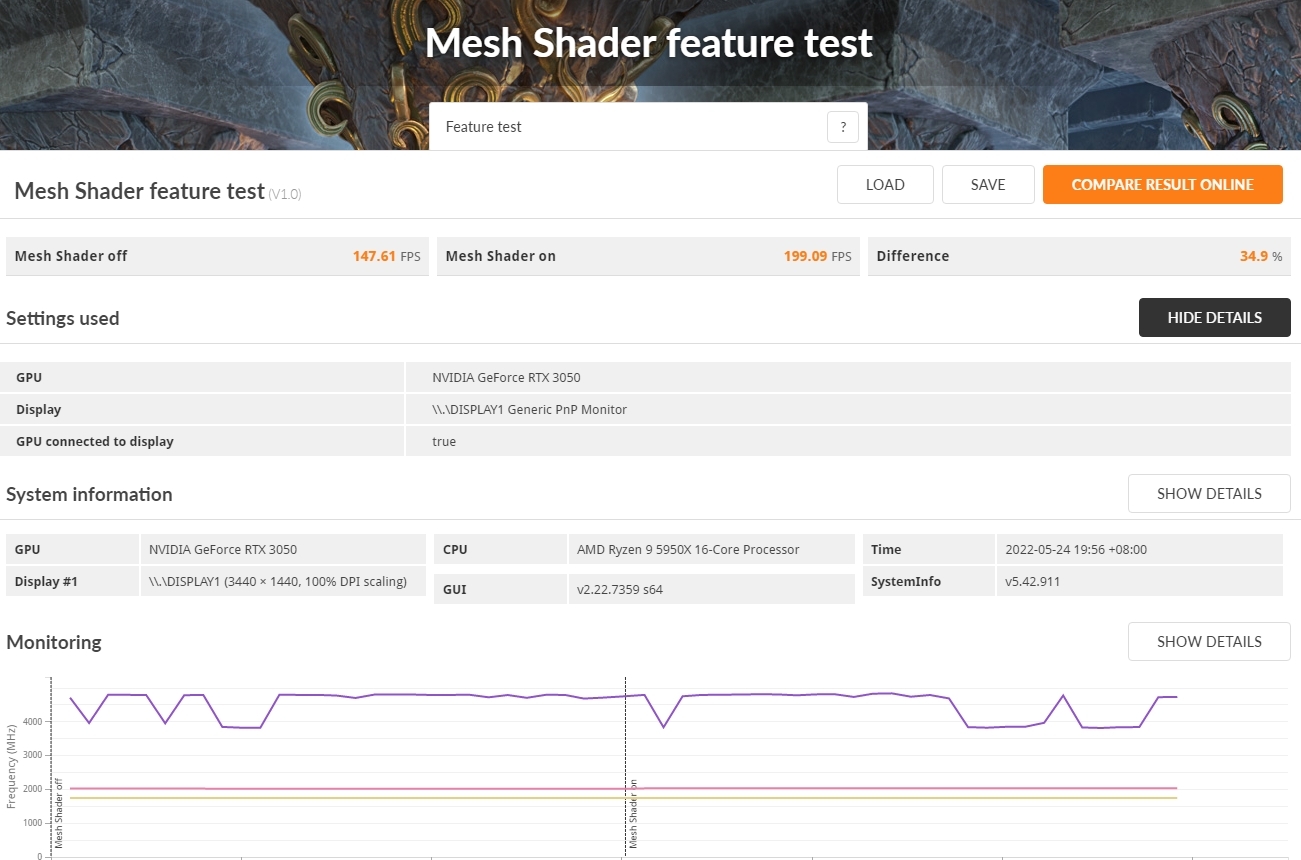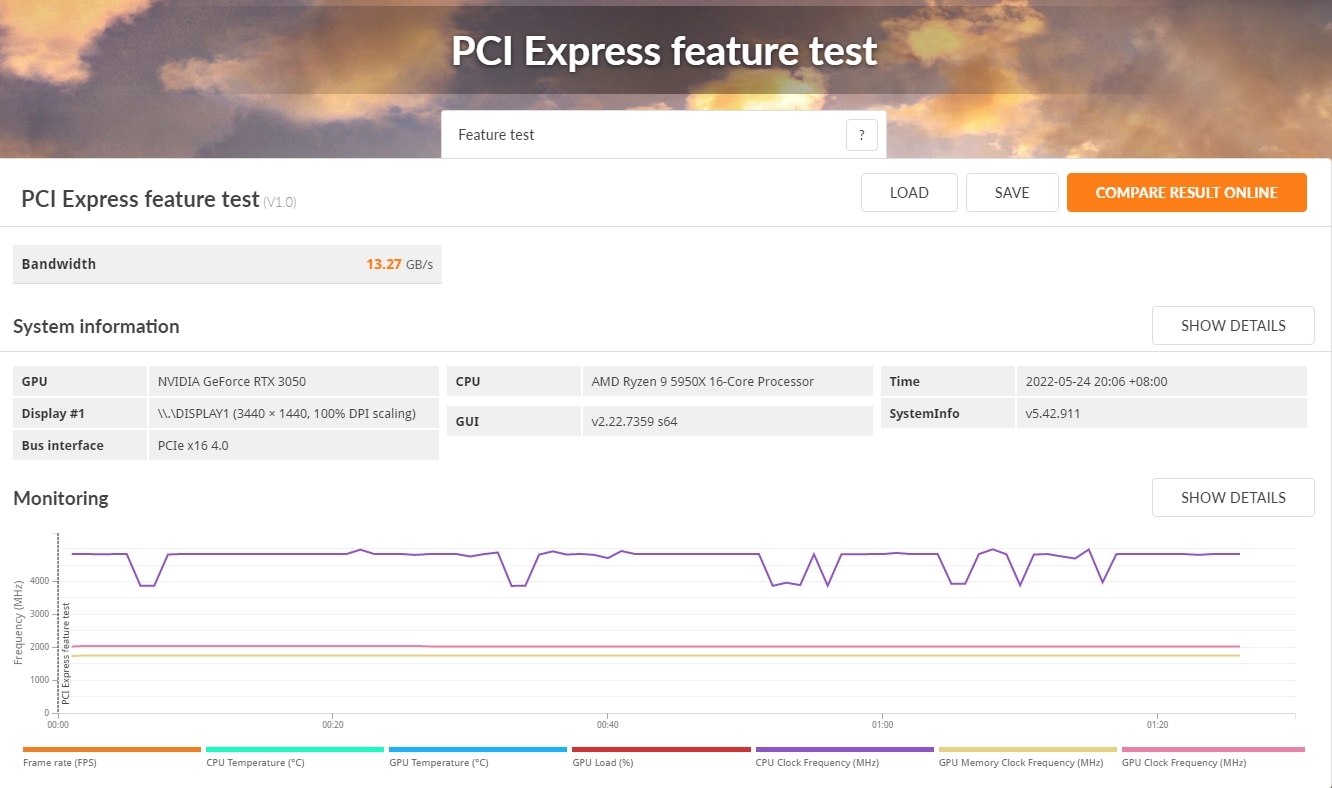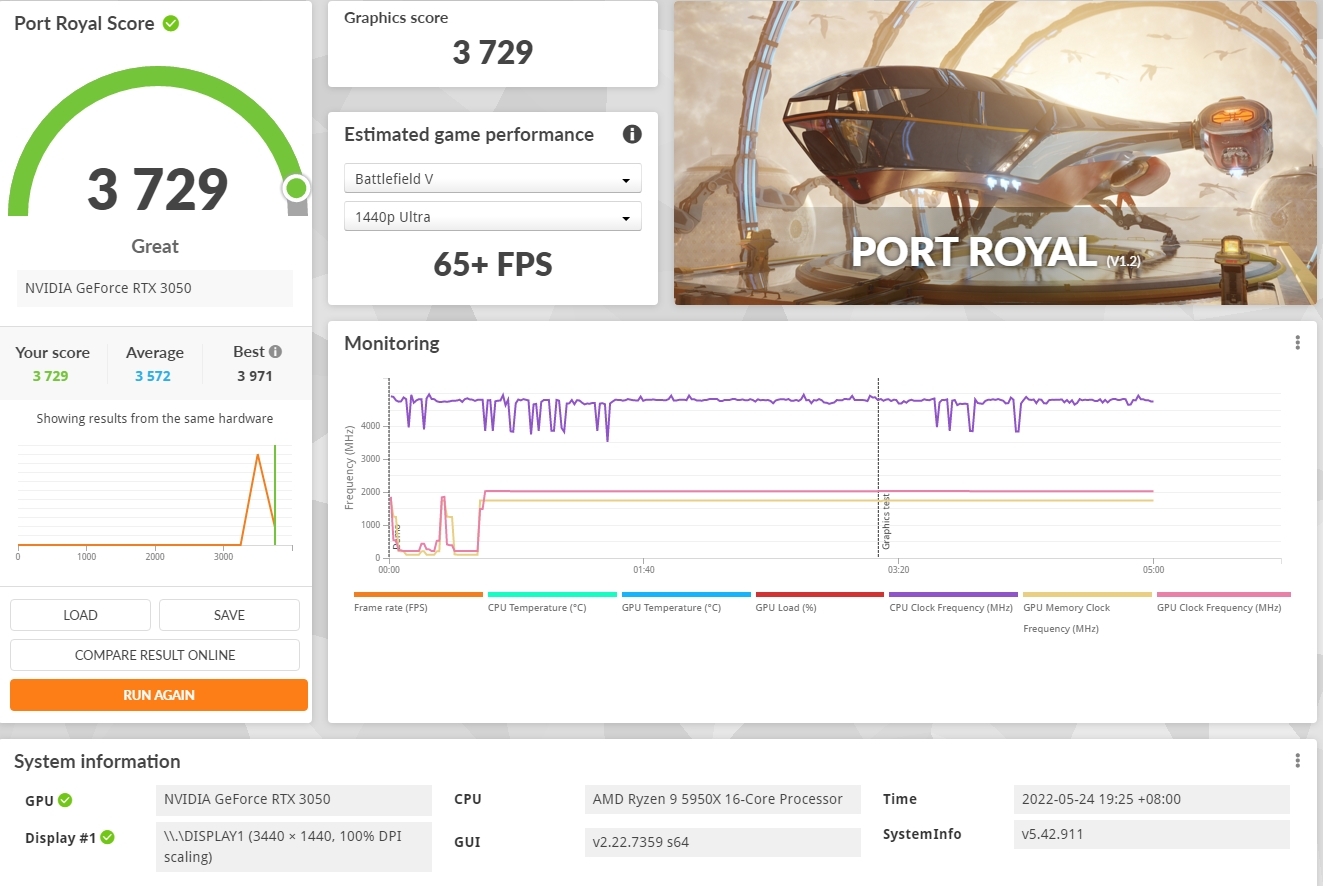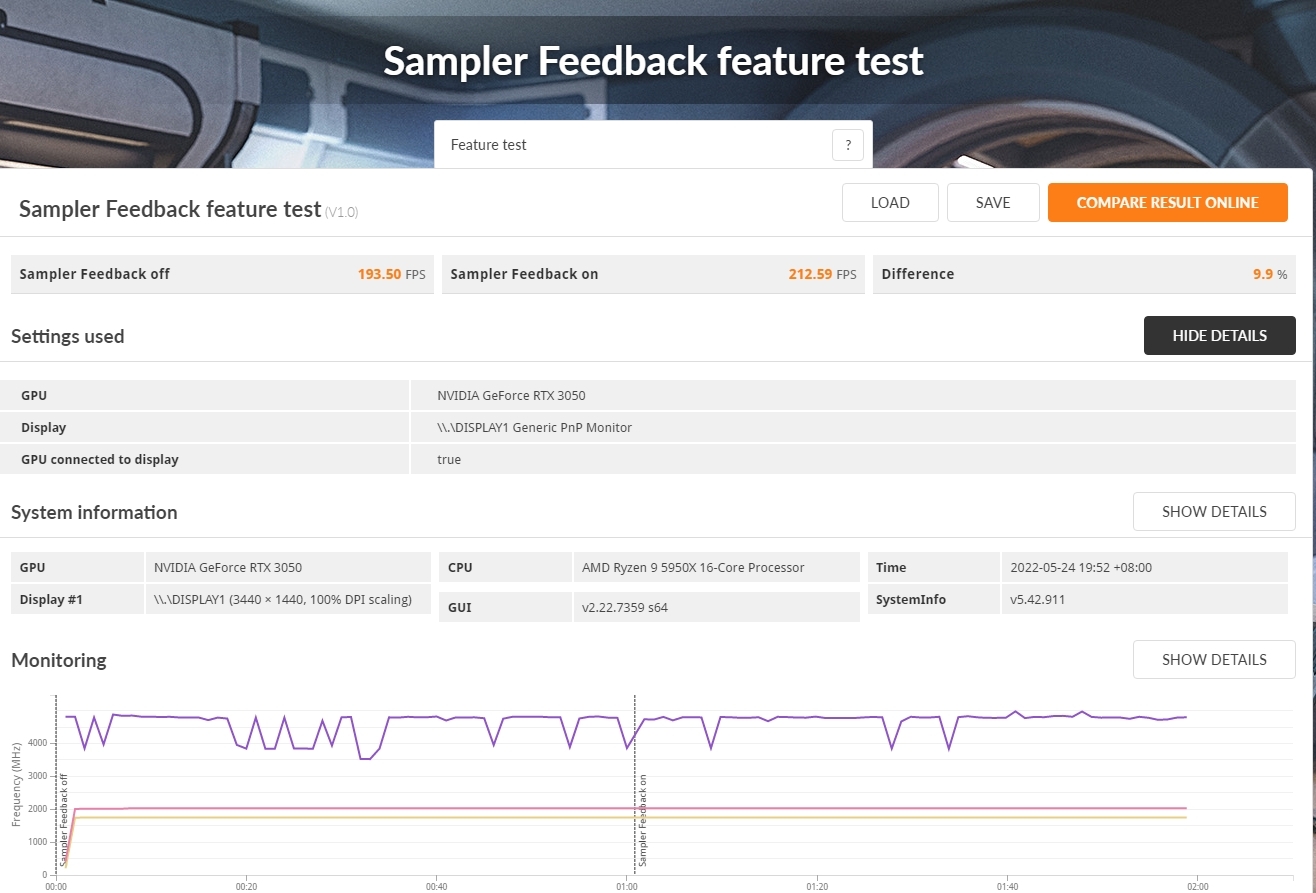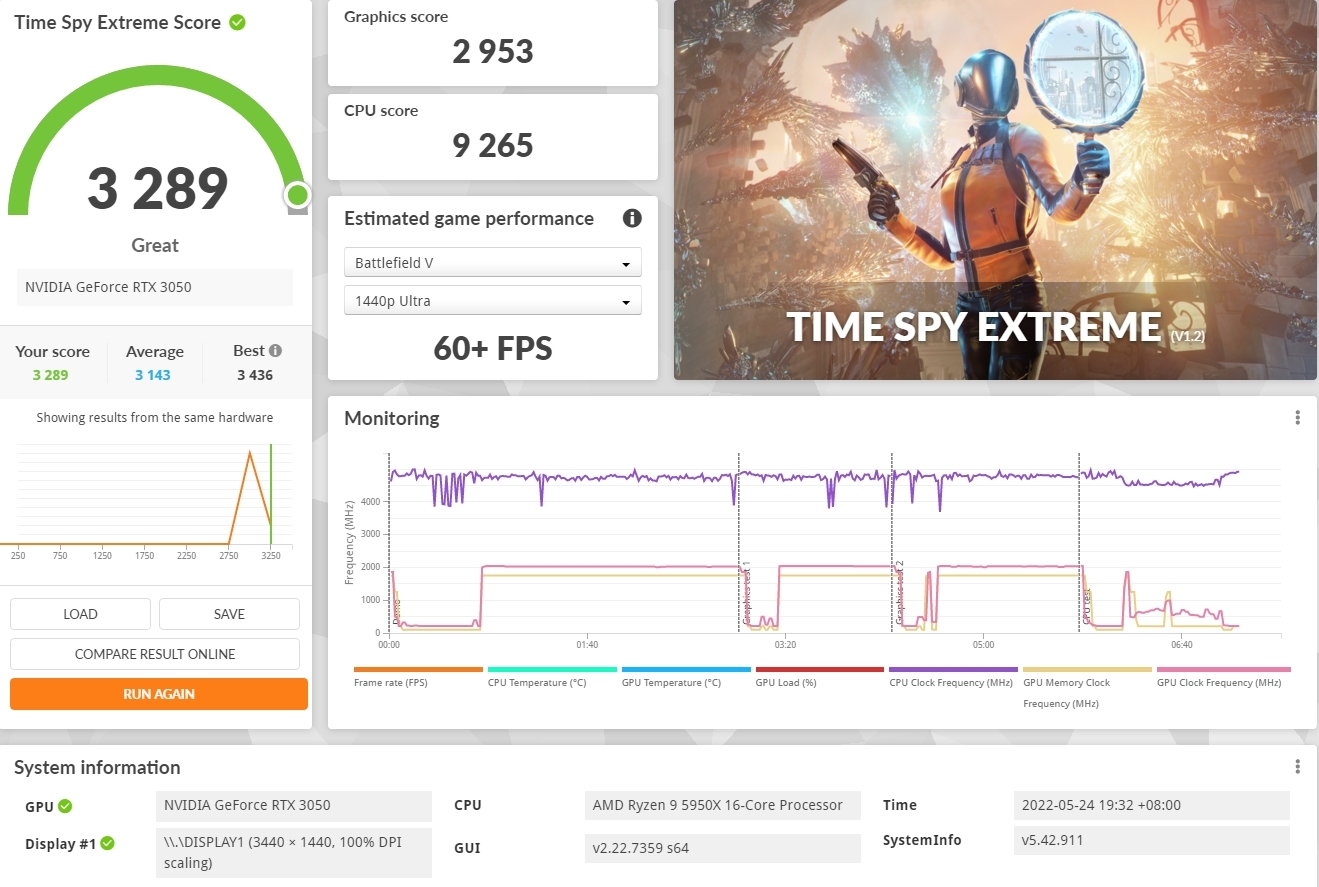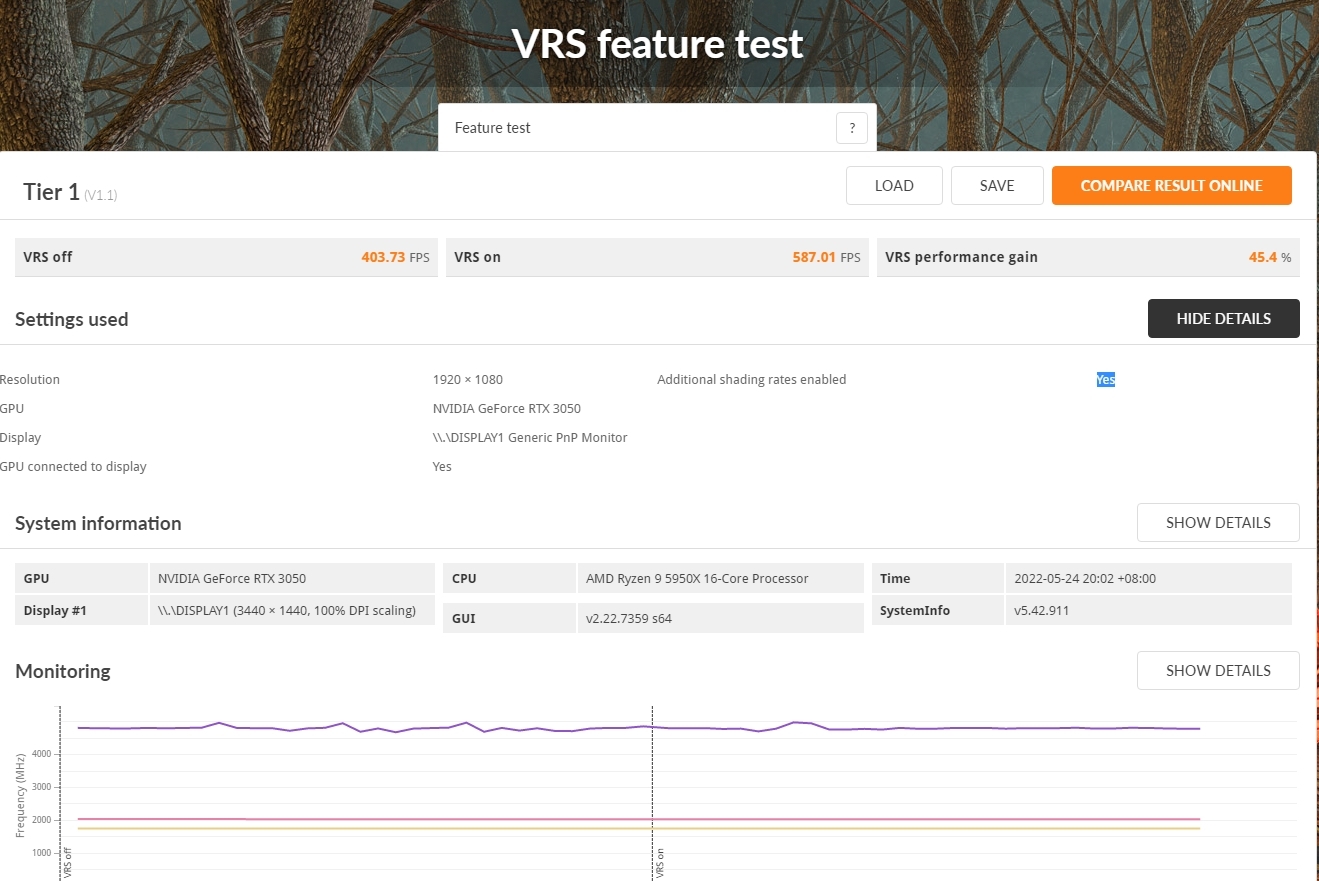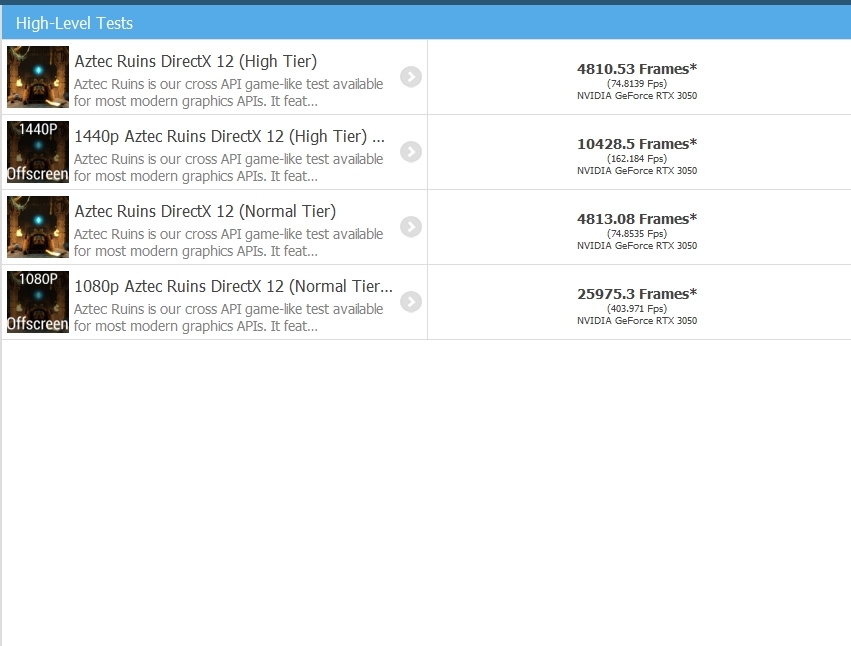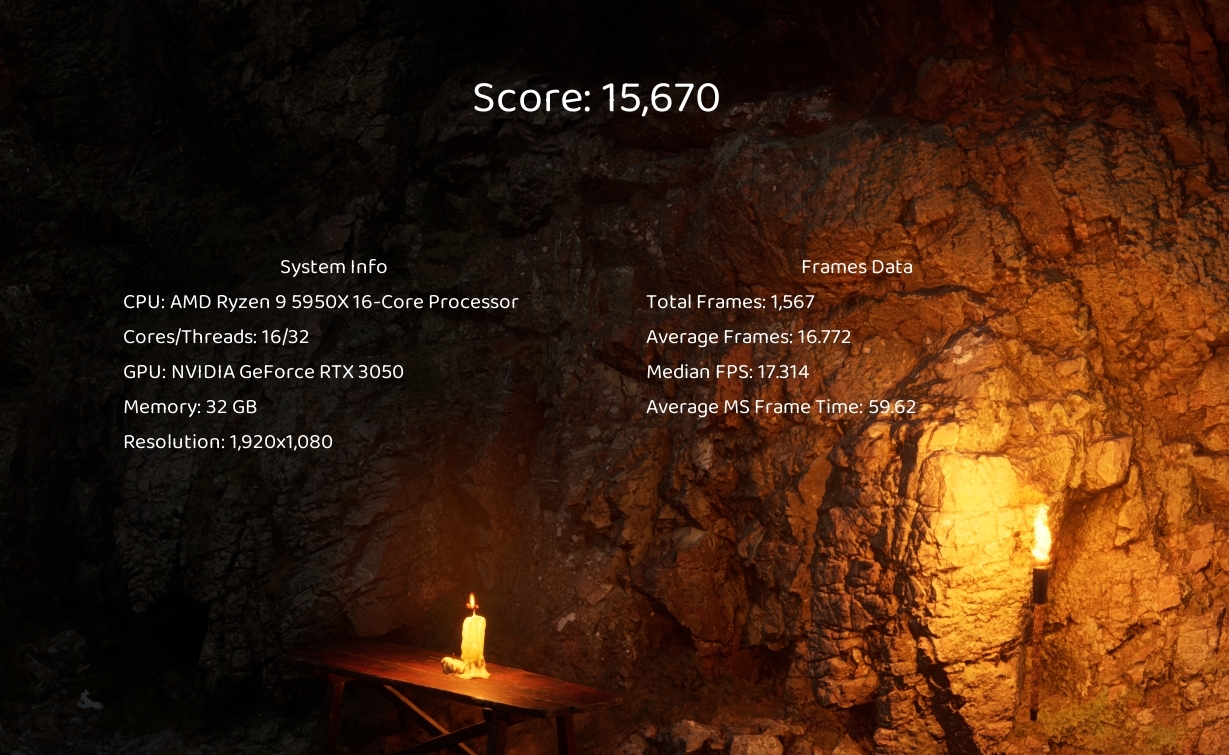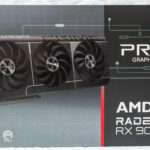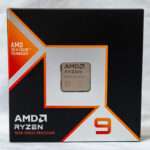The ASUS ROG STRIX GeForce RTX 3050 Gaming OC 8GB is built with the powerful graphics performance of the NVIDIA Ampere architecture. It offers dedicated 2nd gen RT Cores and 3rd gen Tensor Cores, new streaming multiprocessors, and high-speed GDDR6 memory to tackle the latest games. The ROG Strix card performance boost with NVIDIA DLSS (Deep Learning Super Sampling). AI-specialized Tensor Cores on GPUs give your games a speed boost with uncompromised image quality.
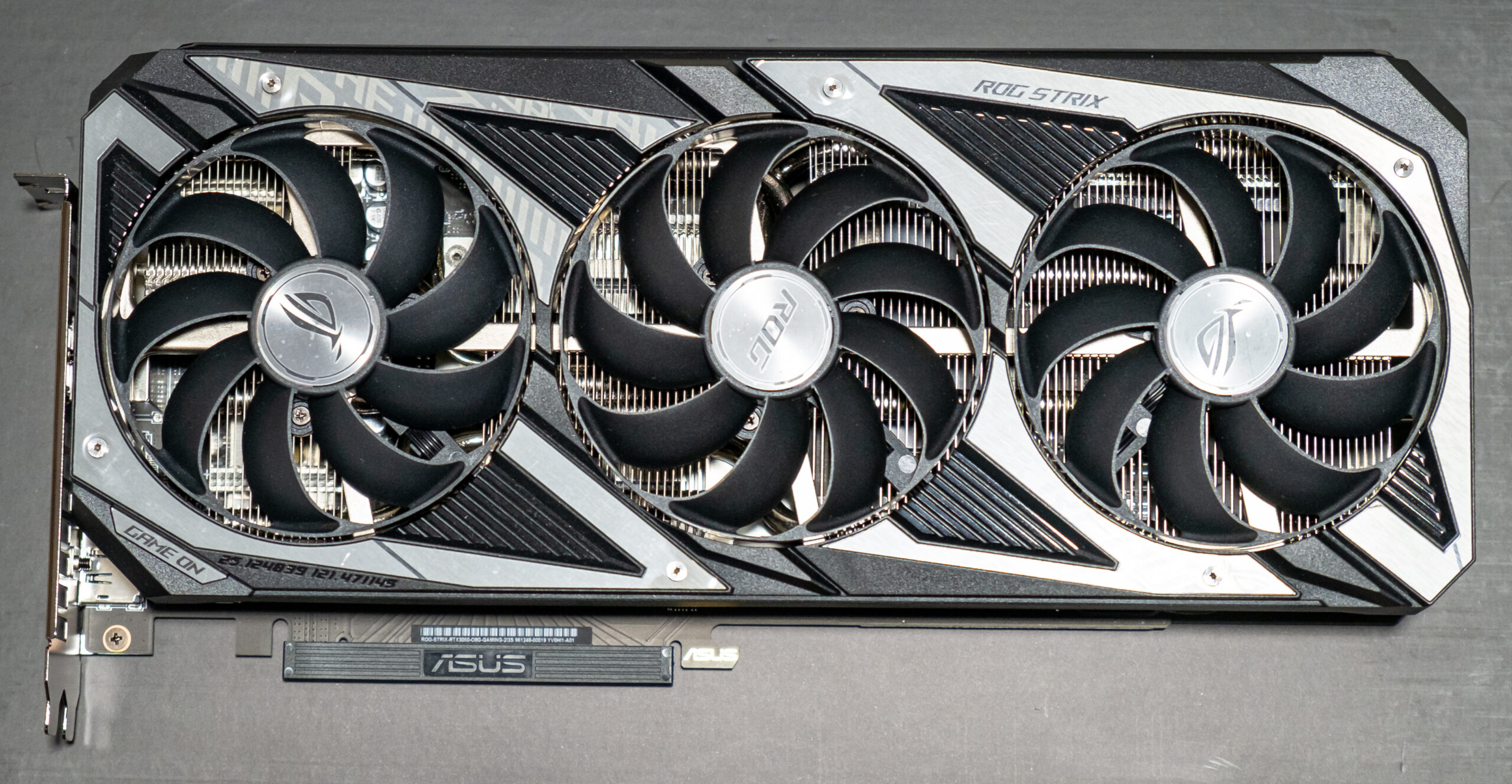
| Asus ROG Strix GeForce RTX 3050 OC Edition 8GB 128-bit GDDR6 | ||
|---|---|---|
| Parameter | ASUS ROG STRIX RTX3050 OC | (reference) |
| GPU | GeForce RTX 3050 (GA106) | |
| Interface | PCI Express x8 4.0 | |
| GPU operating frequency (ROPs), MHz | OC Mode: 1890(Boost)—2025(Max) Gaming Mode: 1860(Boost)—2017(Max) |
1777(Boost)—1927(Max) |
| Memory frequency (physical (effective)), MHz | 3500 (14000) | 3500 (14000) |
| Memory exchange bus width, bit | 128 | |
| The number of computing units in the GPU | twenty | |
| Number of operations (ALU/CUDA) per block | 128 | |
| Total number of ALU/CUDA blocks | 2560 | |
| Number of texturing units (BLF/TLF/ANIS) | 80 | |
| Number of rasterization units (ROP) | 32 | |
| Number of Ray Tracing core | 20 | |
| Number of tensor blocks | 80 | |
| Dimensions, mm | 300×134×55 | 213×120×40 |
| The number of slots in the system unit occupied by the video card | 3 | 2 |
| Textolite color | black | black |
| Peak power consumption in 3D, W (BIOS P Mode/Q Mode) | 111/110 | 132.7 |
| Power consumption in 2D mode, W | 22 | 20 |
| Power consumption in “sleep” mode, W | 10 | 10 |
| Noise level in 3D (maximum load), dBA (BIOS P Mode/Q Mode) | 20.0/20.0 | 37.3 |
| Noise level in 2D (video viewing), dBA | 18.0 | 18.0 |
| Noise level in 2D (idle), dBA | 18.0 | 18.0 |
| Video outputs | 2×HDMI 2.1, 3×DisplayPort 1.4a | 1×HDMI 2.1, 3×DisplayPort 1.4a |
| Support for multiprocessing | No | |
| Maximum number of receivers/monitors for simultaneous image output | 4 | 4 |
| Power: 8-pin connectors | 1 | 1 |
| Power: 6-pin connectors | 0 | 0 |
| Maximum Resolution/Frequency, Display Port | 3840×2160@120Hz (7680×4320@60Hz) | |
| Maximum Resolution/Frequency, HDMI | 3840×2160@120Hz (7680×4320@60Hz) | |

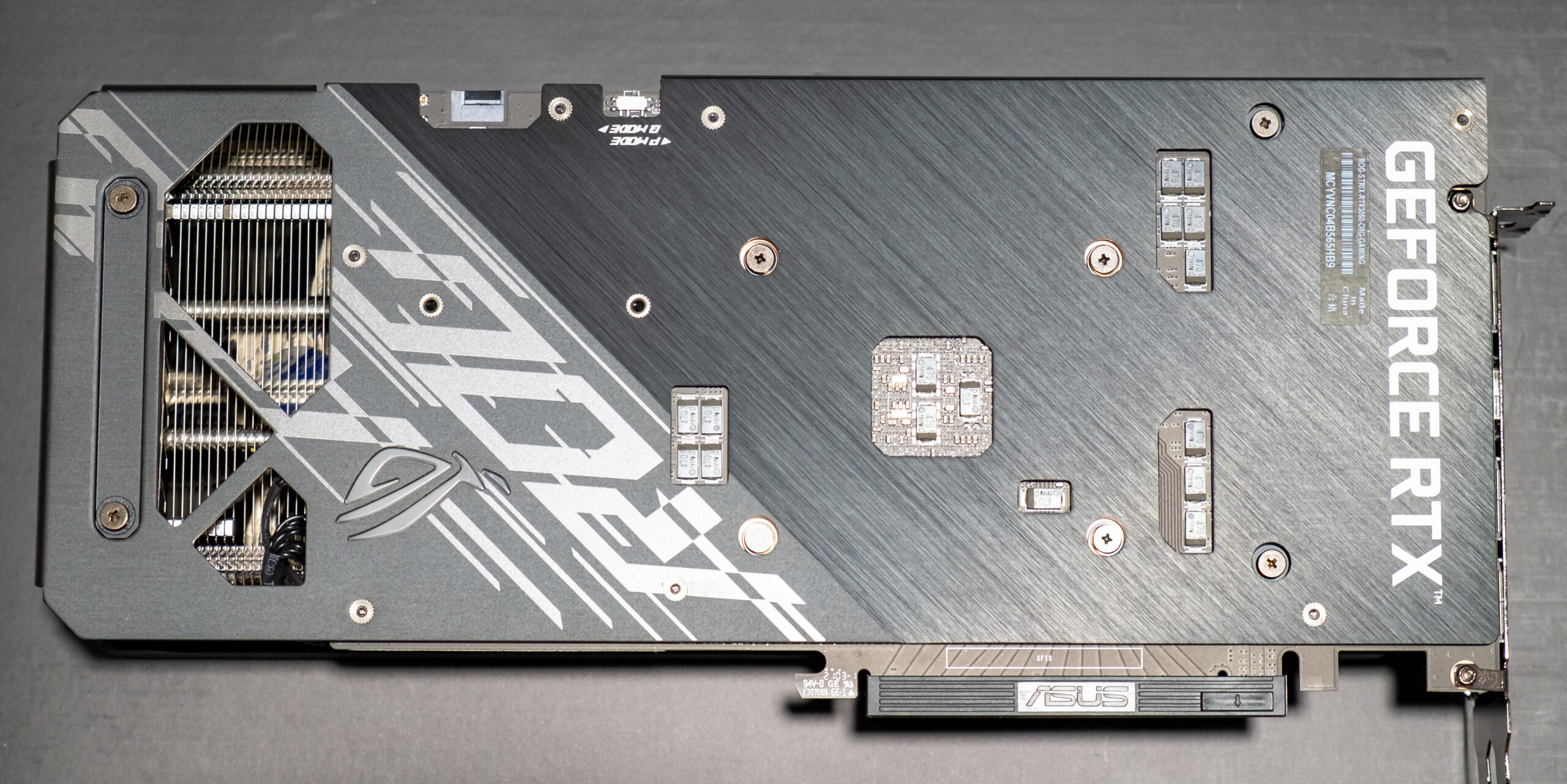

The graphics card has 5 video outputs: one more HDMI 2.1 has been added. However, the GPU can only output to 4 monitors at the same time, so this solution simply provides more flexibility when choosing video outputs.

The card has a dual BIOS. There is a switch on the back plate of the card, in different BIOS versions (they are called Performance mode and Quiet mode – productive and quiet modes) different fan operation curves are set.
Core frequency in the default mode (Gaming mode) is 5.5% higher in boost than in the reference card. OC Mode raises the Boost frequency by 6.3% relative to the reference value, but the maximum frequency is only 5% higher than the reference maximum, so the total performance increase was no more than 5.5%.
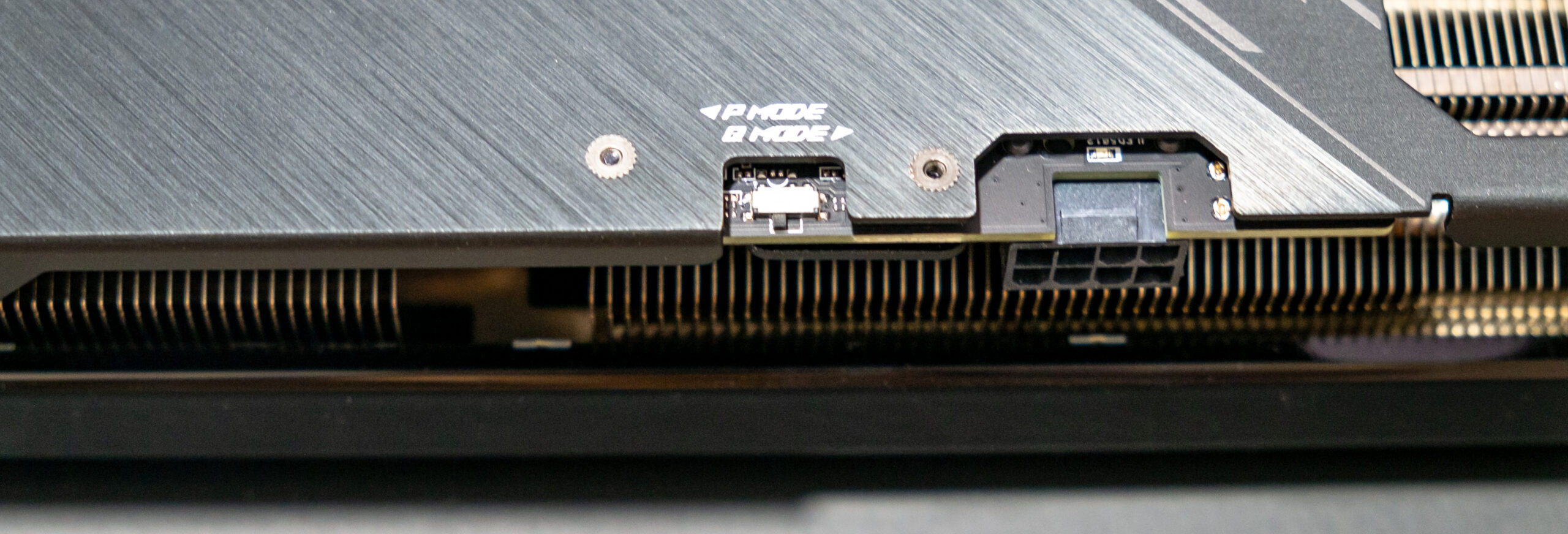
Power is supplied through one 8-pin connector. It has an LED indicator of correct power connection (in case of incorrect connection and in the absence of power, it lights up in red).
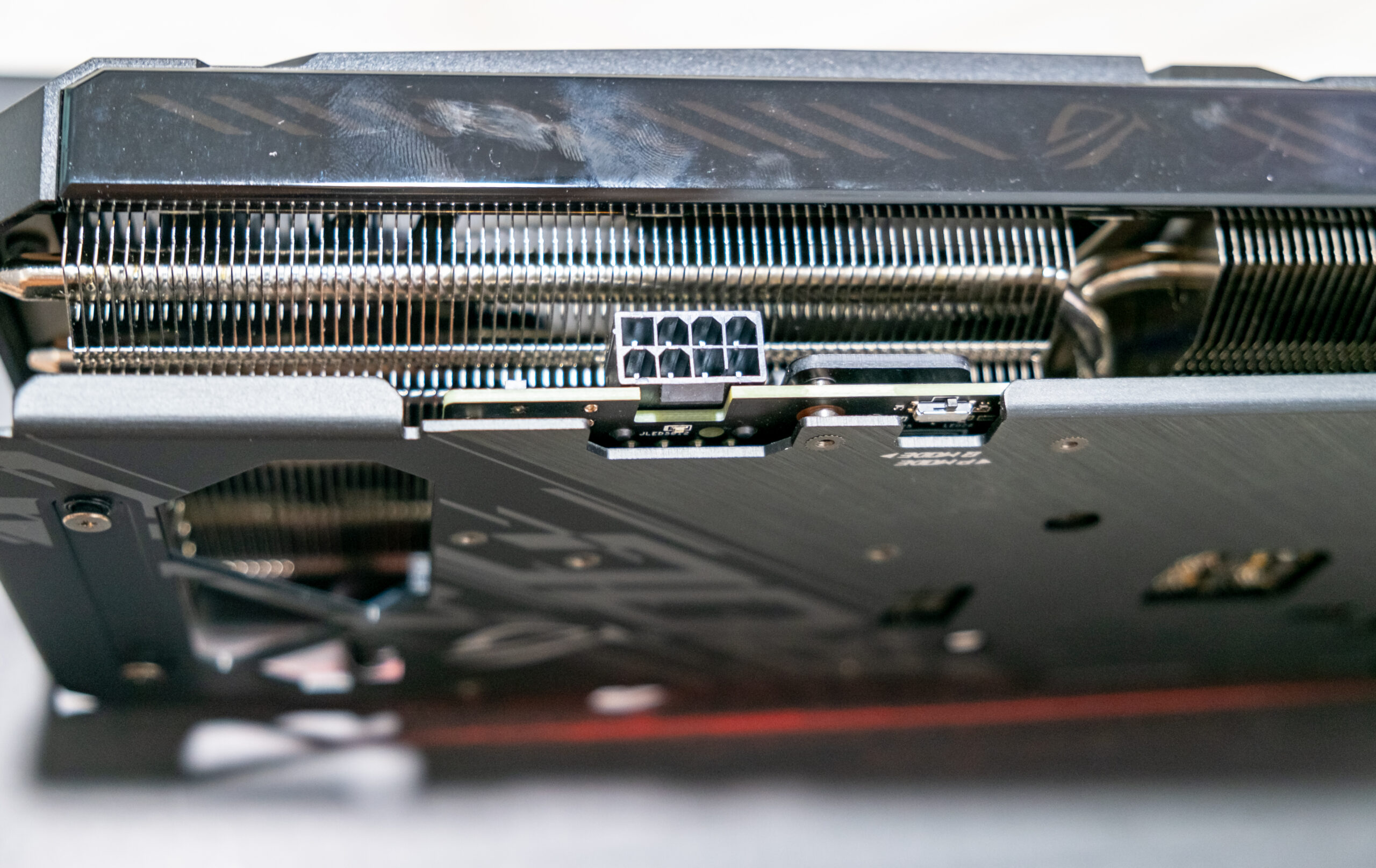

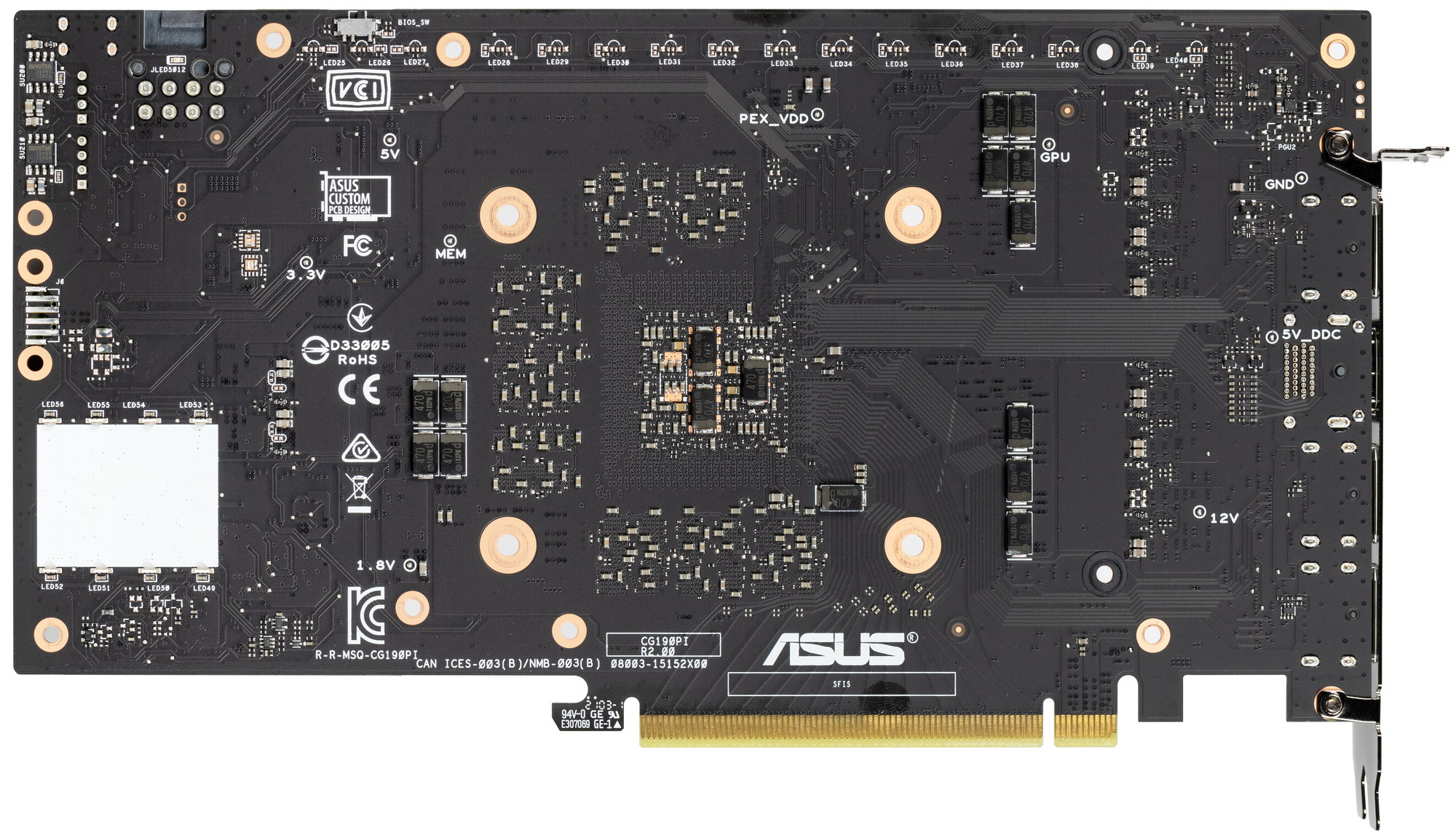
The card has 8 GB of GDDR6 SDRAM placed in 4 x 16 Gb chips on the front side of the PCB. Micron memory chips (GDDR6, MT61K512M32KPA-14:C / D9ZPM ) are designed for a conditional nominal operating frequency of 3500 (14000) MHz.
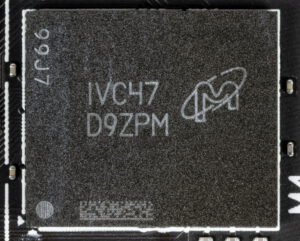
The GPU Core is marked GA106-150-KA-A1, which means the same processor that is used on the RTX 3060 (but it is marked GA106-300), that is, the same chip cut down by block. There is also a GA107, which has the same set of blocks as the stripped-down GA106-150 used in laptops, but as the rejections from the GA106 run out, all RTX 3050 cards will start using the GA107. And that’s why I highlighted “yet” above, that is, at the moment, all RTX 3050s on the market have GA106 processors, which are designed for the PCIe x16 bus, while the GA107 has only PCIe x8. Considering that the cards from many manufacturers for the 3050 and 3060 are essentially the same (as we now see in the pictures above), we can assume that all GeForce RTX 3050 with GA106 have a real PCIe x16 bus, but with the advent of GA107 it will already be clear x8.

The total number of power phases for the Asus card based on the GeForce RTX 3060 is 10, with 8 phases per core and 2 for memory chips. But the card based on the RTX 3050 has 2 phases less, that is, 6 phases per core and the same 2 phases for memory chips.
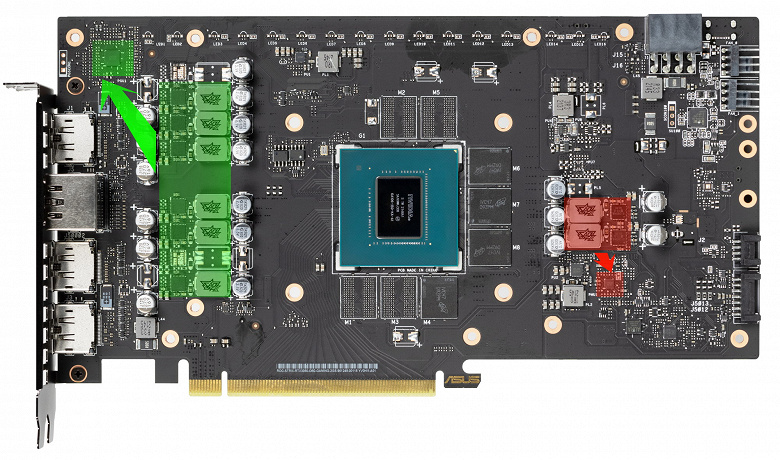
The green color indicates the power supply circuit of the core, the red color indicates the memory. To control the GPU power circuit, a uP9512R PWM controller (uPI Semiconductor) is used. It is located on the front side of the board.
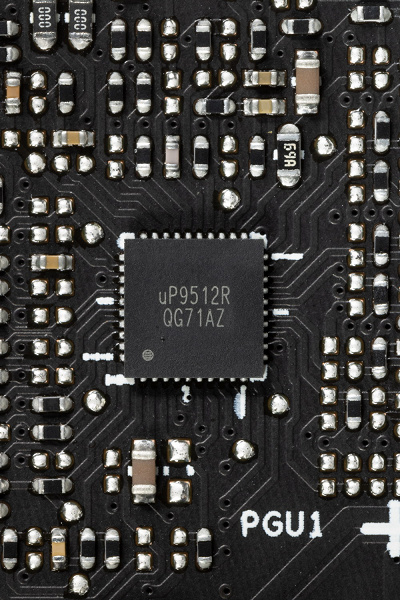
On the same side is a uPI Semiconductor uP9529Q PWM controller that controls the 2-phase power supply for the memory chips.
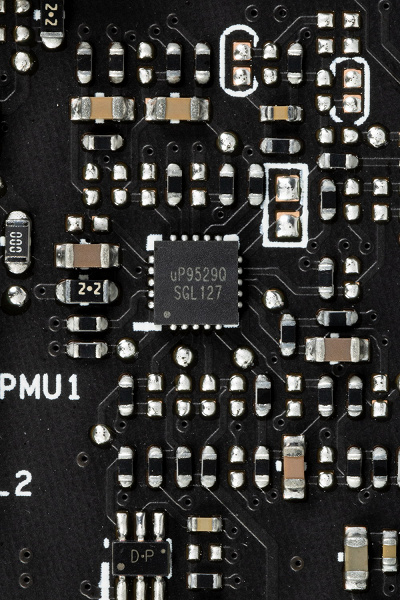
The core power circuit of the Asus card is using Super Alloy Power II technology, modern solid capacitors and DrMOS transistor assemblies are used – in this case SiC654A (Vishay), each of which is rated for a maximum of 50 A. They are also used in the memory power circuit .
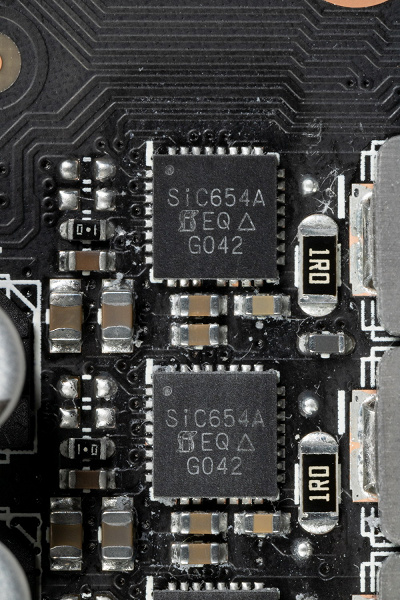
There is also an NCP45491 (On Semiconductor) controller responsible for monitoring the card (tracking voltage and temperature). It is located on the front side of the PCB.
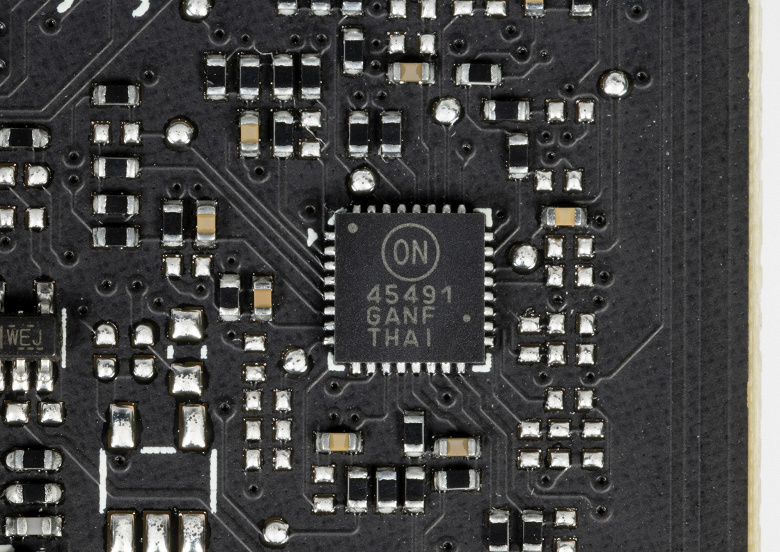
Like the entire ROG series of video cards, this board has two connectors in the tail section
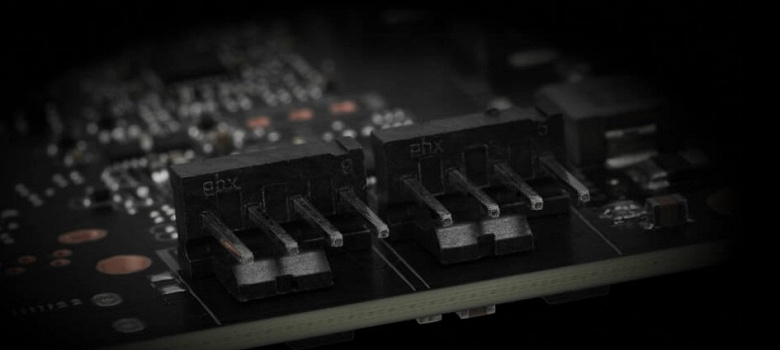
To connect case fans that will work in accordance with the temperature of the video card, and the IT8915FN (ITE) controller is responsible for this.
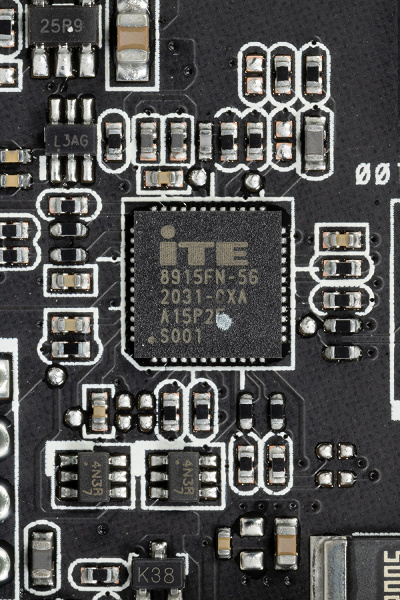
And the backlight control is given to the proprietary Aura 82UA0 controller (most likely, a re-marking of one of the On Semiconductor controllers).
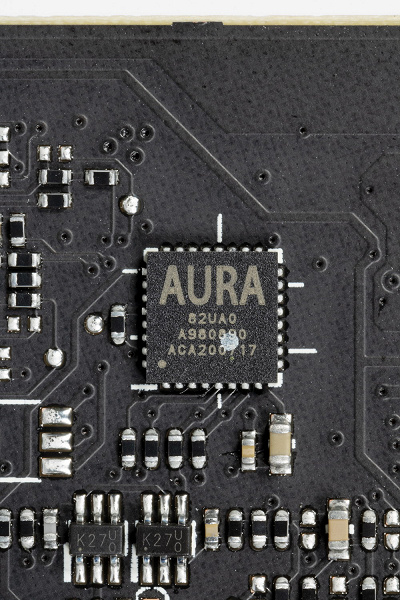
Dismantle cooler fan & black plate:
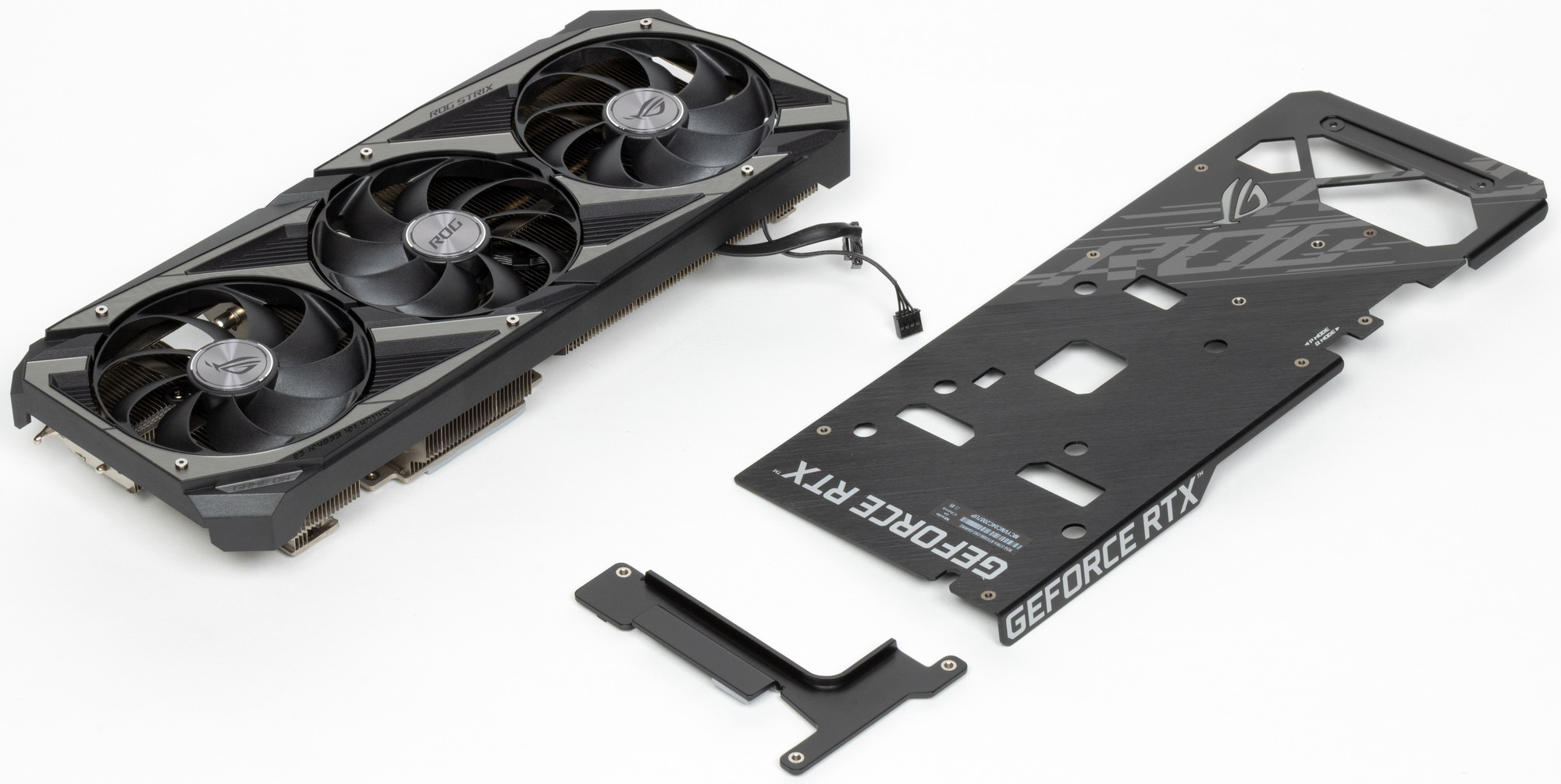
The basis of the cooler is a large plate nickel-plated heatsink with heat pipes soldered to the sole of direct contact with the GPU and memory chips. The same heatsink also serves as a cooler for the VRM power converter components with the help of small soles. For a pair of VRM memory mosfets, a separate small heatsink is provided, screwed to the main heatsink. The back plate is made of aluminium with an electrically insulating coating and has a triple purpose: it serves as a PCB protection element, a stiffener, and carries a ROG logo backlight diffuser.
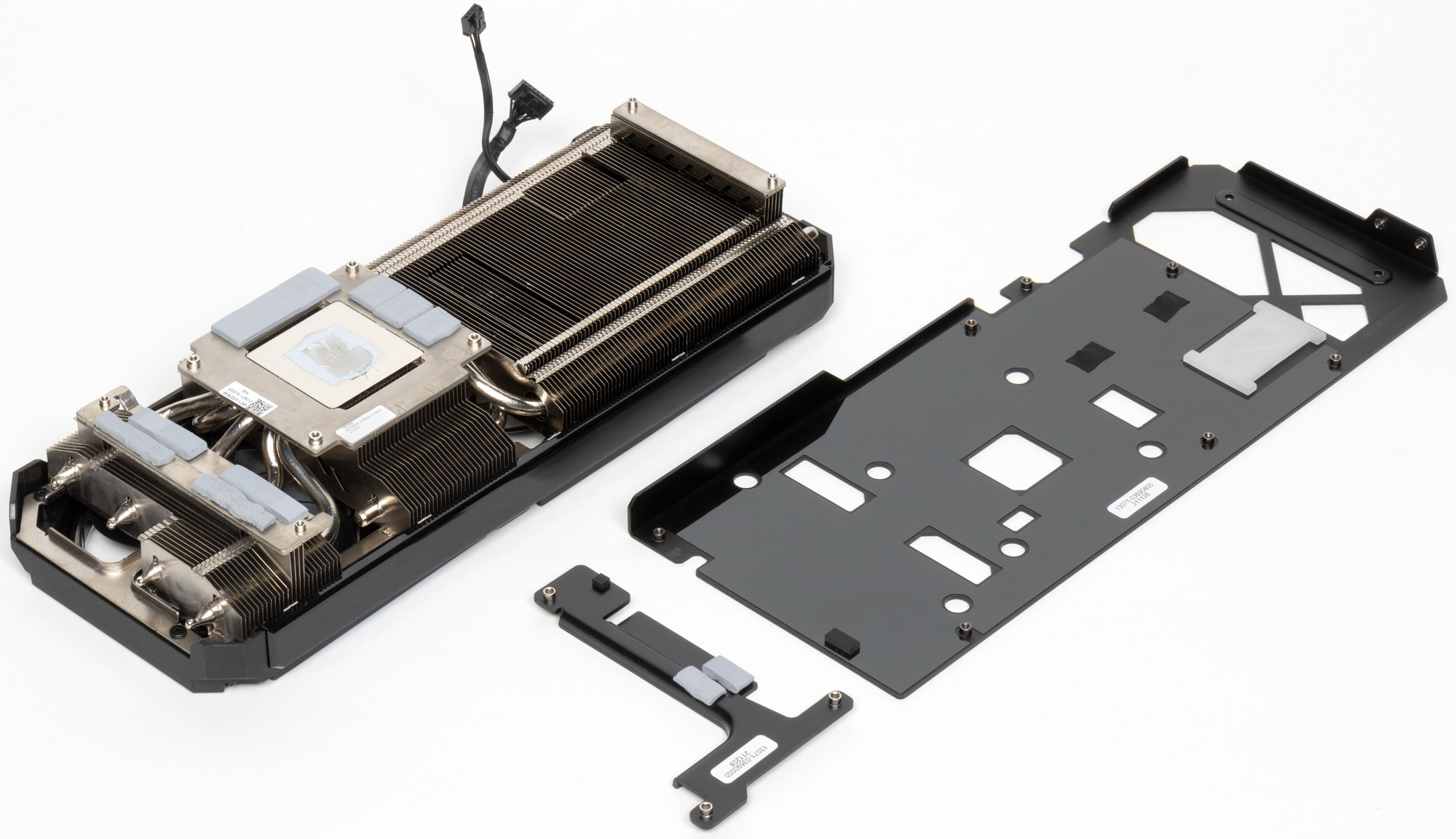
A casing with three ∅95 mm Axial-tech fans is installed on top of the radiator, in which the ends of the blades are connected by a ring for a clearer direction of air flow to the radiator, while the number of blades is reduced to 9 (compared to more powerful COs, where they can be up to 13). The central fan rotates in the opposite direction relative to the outer ones, which provides a kind of “gear effect”, helping to fight the turbulence of the air flow.
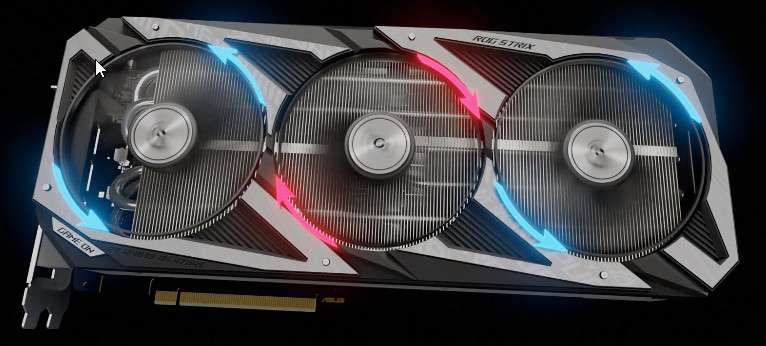
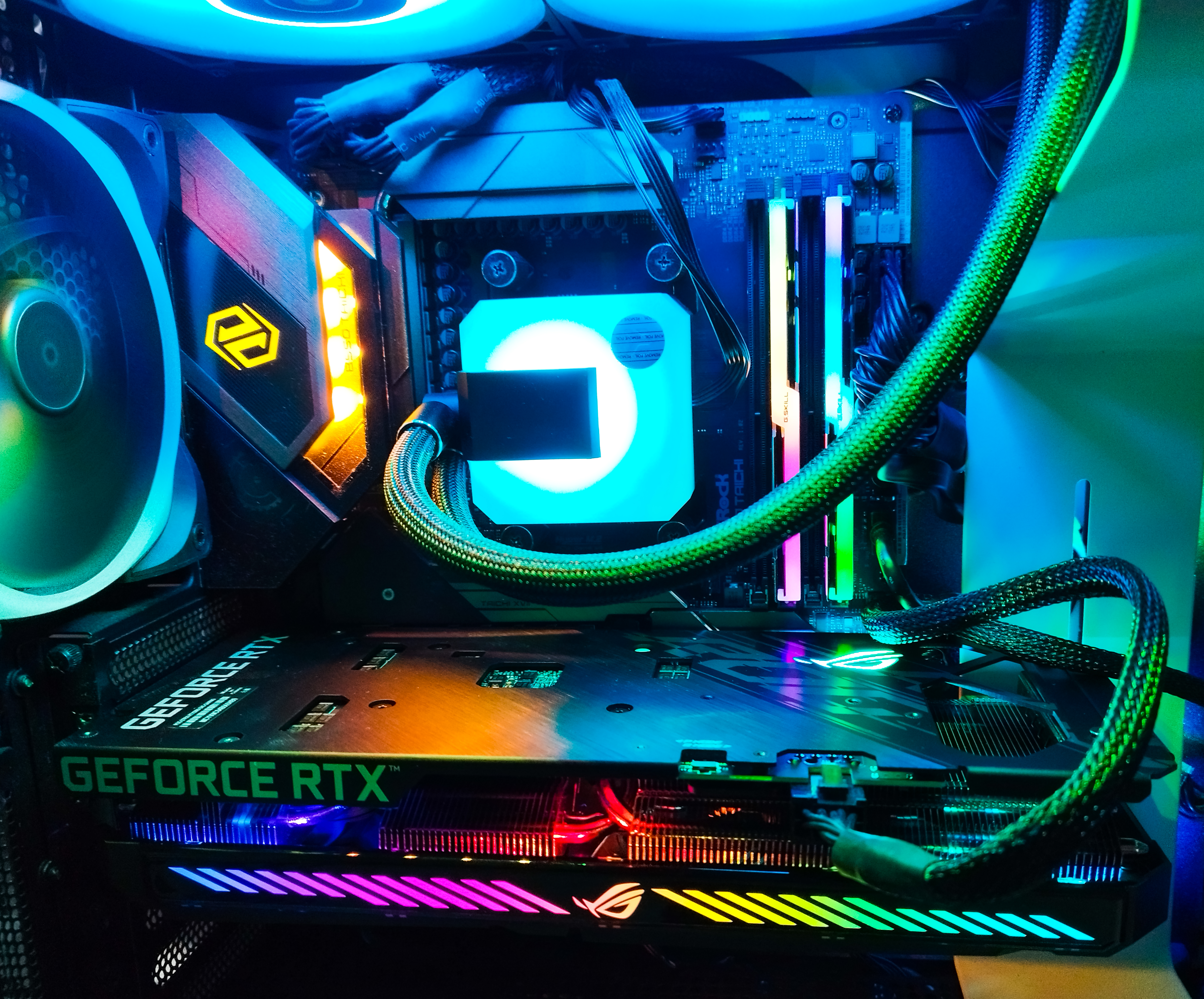
Benchmark:
ASUS ROG STRIX GeForce RTX 3050 is the low-mid range graphics card in Nvidia’s Ampere-based segment. As such, our graphics workstation, based on an ASRock B550 Taichi motherboard and AMD 5950X 16 cores processor. The ram we will be using is G.Skill’s F4-3600C16D- 32GTZNC memory kit. ADATA XPG GAMMIX S50 Lite 1TB M.2 NVMe SSD is used as well to run with benchmark.
We will be using latest Nvidia DCH driver 512.77 and Windows 11 Professional Build 22H2
